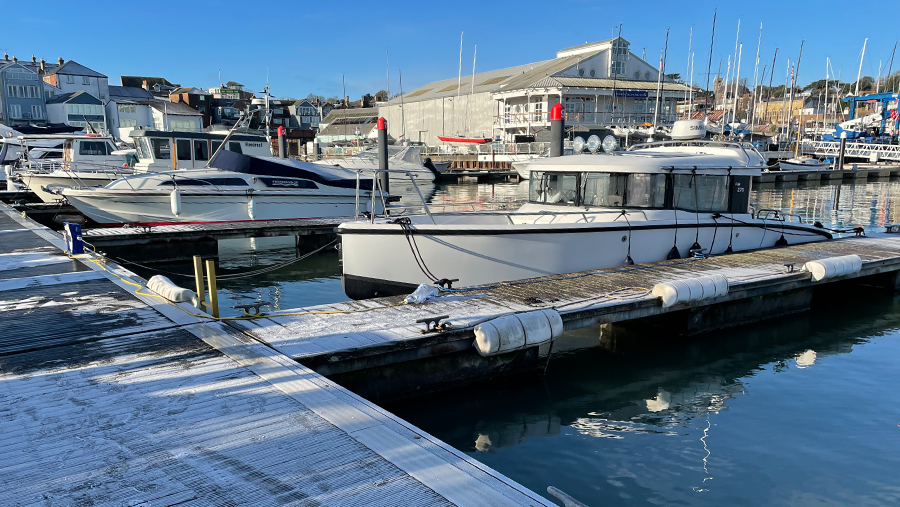Those with outboard engines might choose to remove the engine completely from the boat during the winter and store it securely under cover. If so, store it trim-down to allow water drainage, prevent the block freezing and relieve pressure on the transom plate. If removing, store the engine standing up securely. It is recommended the engine should be flushed fully through and washed down, especially if you operate in salt water as it helps avoid internal corrosion of the aluminium waterways. Then drain the engine of fuel, change the gear oil and lubricate the cylinders plus engine exterior, check spark plugs and grease the propeller shaft, all moving parts, joints, nuts and bolts etc.In order to avoid condensation fill the fuel tanks and change the fuel filter and water separator.
Inboard engines should be run and the oil and filters changed, then the engine flushed with water and biodegradable antifreeze added. Change the transmission fluid at recommended intervals. Fogging oil can be sprayed into the carburettors and cylinders as a protective coating to prevent any corrosion occurring. For the start of the next season ensure anodes for both propeller shafts and outdrives are replaced if depleted.
For batteries, if possible remove them all, charge up and check the water levels (consider if needed to operate bilge pumps). When done, assess their condition with a hydrometer. Lightly grease the terminal ends, store in a cool, dry place and if any are over four years old, it is probably worth replacing them. Blocking off the exhaust and if possible the air inlet to the engine is a good idea in order to prevent moisture getting into the engine - but remember to remove closures before relaunching!
A good clean is essential. Give the exterior a thorough pressure washdown to remove the salt from hull, topsides and decks, plus remove any barnacles lurking, before you apply a coat of wax. Soak your ropes in domestic detergent and rinse with fresh water, close seacocks if remaining on the water, but open if ashore, then remove any sails and sail covers. Allow air and rain to get to the anchor chain, this will help to give it a thorough clean.

